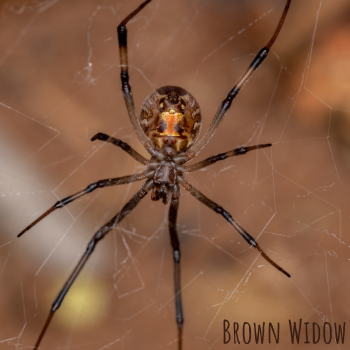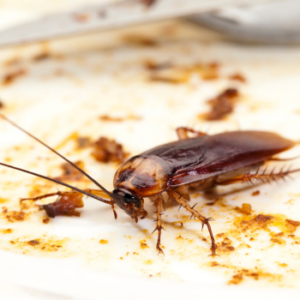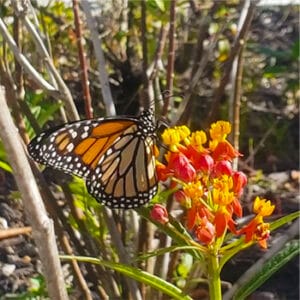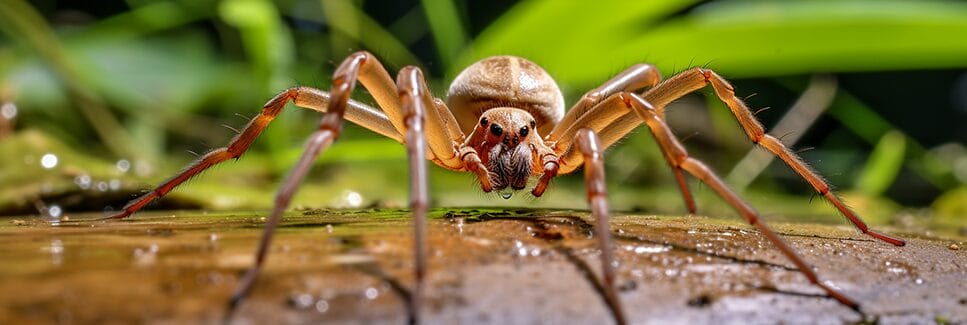
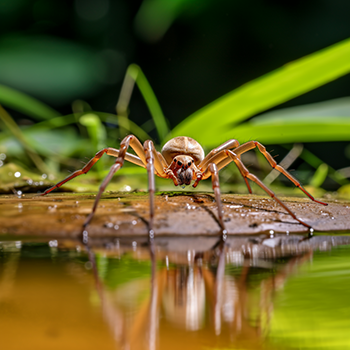
Florida Venomous Spiders to Know and Avoid
Florida’s balmy climate and diverse ecosystems are a haven for many creatures, including some spooky spiders. While most Sunshine State spiders are harmless, a few venomous residents are good to be aware of.
Knowing what these spiders look like, where they typically live, and how to avoid them can help you, and your children and pets, stay safe.
This guide will cover the essential information about Florida’s venomous spiders, their bites, and how to prevent unwanted encounters.
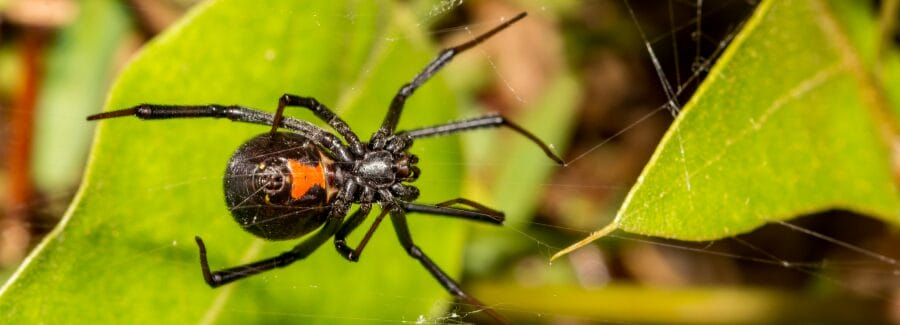
Top Venomous Spiders in Florida:
Florida hosts several venomous spiders that residents and visitors should be aware of, especially if you have kids or pets.
While the spiders mentioned below can indeed be dangerous, the actual risk of severe injury or death is low, thanks to the availability of medical treatment and the relatively low frequency of bites.
Check out WebMD’s Recluse Spider Bite treatments here.
Black Widow Spiders:


There are two very similar-looking black widow spiders found in Florida: Southern Black Widow (Latrodectus mactans)and Northern Black Widow (Latrodectus variolus).
Look for a shiny black body with a red hourglass marking on the abdomen (though some don’t have visible red and appear all black).
These spiders are very small… their bodies are about ½ inch long. They favor woodpiles and outdoor shelters, dark garages and places with lots of gnats and ants and small insects they can feed on.
- Size: Full length including legs is approximately 1-1.5 inches.
- Appearance: Shiny black with a red hourglass marking on the underside of the abdomen.
- Habitat: Commonly found in garages, woodpiles, and outdoor furniture.
- Bites: Can cause severe muscle pain, cramps, and systemic effects – venom is strong but rarely fatal to humans. Most common bite symptoms are red itchy/painful marks which may or may not become a blister.
They spin non-symmetrical webs that are irregular-looking and typically close to the ground.
Red Widow Spiders (Latrodectus bishopi):
The Red Widow is less common but still poses a significant risk.
- Size: Can reach an overall span of about 1.0 to 1.5 inches including legs.
- Appearance: Bright red head, thorax, and legs with a black abdomen featuring red spots.
- Habitat: Prefers palmetto scrub environments and is often found in sand dunes.
- Danger Level: Moderate; bites can cause pain and systemic symptoms but are less likely to be fatal.
Similar to the black widow but with an orange head and thorax, and with legs that appear more brown than black. Found in sandy areas and palmetto trees. Venom potency is comparable to black widows.
Brown Widow (Latrodectus geometricus):
While its bite is venomous, it is generally less dangerous than that of the Southern Black Widow. It’s easy to identify apart from other types of widow spiders because of the strips on its legs with brown-er coloring.
- Size: Can reach an overall span, including legs, of about 1 – 1.3 inches for females; males are smaller.
- Appearance: Light to dark brown or gray with a distinctive orange or yellow hourglass marking on the underside of the abdomen. The body often has black and white patterns, and the legs may have dark banding.
- Habitat: Prefers sheltered areas such as under outdoor furniture, in sheds, garages, eaves, and even in mailboxes. They often build their webs in undisturbed places.
- Web Structure: Like other widow spiders, the Brown Widow constructs irregular, tangled webs to capture prey. Webs tend to be closer to the ground than other spiders.
Brown Recluse (Loxosceles reclusa):
The only non-widow on the list, this violin-shaped marked spider is brown and prefers undisturbed areas. The Brown Recluse is known for its potent venom. It is not native to Florida.
- Size: total length with legs approximately 1-1.5 inches
- Appearance: Light to dark brown with a distinctive violin-shaped marking on its back.
- Habitat: Prefers dark, secluded areas such as closets, attics, and under furniture.
- Bites: Symptoms include reddened skin, possible blister, mild to intense pain and itching for several hours. More severe reactions can include an open sore/ulcer leading to necrosis (dead tissue).
Incidences of brown recluse spider bites in Florida are lower compared to states to their native habitats, especially in Missouri and Kansas.
Where to Find (and Avoid) Them:
Florida venomous spiders generally avoid humans and prefer secluded spots. Reduce clutter around your home, wear gloves when gardening, and be cautious when moving objects outdoors.
FAQs
Q: How can I identify a venomous spider bite?
A: Venomous spider bites often cause immediate pain, redness, and swelling. More severe symptoms include muscle cramps, nausea, and necrosis.
Q: What should I do if I’m bitten by a venomous spider?
A: Clean the bite with soap and water, apply ice to reduce swelling, and seek medical attention. Keep the affected limb elevated if possible.
Q: Are all black spiders in Florida dangerous?
A: No, not all black spiders are dangerous. However, it’s important to be cautious, as black widows are venomous.
Q: Can spider bites be fatal?
A: While very rare, spider bites, particularly from black widows and brown recluses, can be fatal, especially in vulnerable individuals such as the elderly, young children, or those with compromised immune systems.
By understanding Florida’s venomous spiders, you can share your home with these creepy crawlies without unnecessary fear. Remember, they’re usually more scared of you than you are of them!
As an Amazon Associate I earn from qualifying purchases at no additional cost to you.



